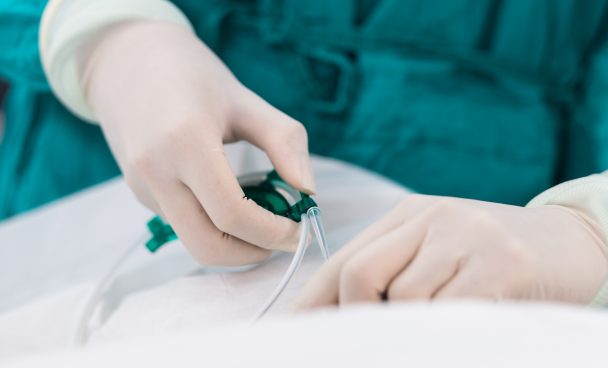Catheter maintenance is the procedure carried out during the treatment, always after each use and after the end of treatment every 90 days, to guarantee its proper functionality, preventing obstruction or premature loss of the catheter. This procedure is carried out by a specialized Nurse, so that operation, skin aspect, swelling, local redness, or any report of complaint is observed. Salinization prevents the formation of blood clots (thrombus) that can form inside the catheter among other events.
Why is catheter maintenance mandatory?
In cancer treatment, it may be necessary to give medications into patients’ veins frequently. To avoid repeated puncture of needles, which can cause injury and/or inflammation in the veins, a central venous catheter (CVC) is used to give the drugs directly into the bloodstream.
Although being safe and comfortable to use in drug application, such as chemotherapy, catheters can become clogged due to the clots’ formation or drugs’ precipitation. That is why maintenance is necessary: to maintain the catheter’s permeability and prevent complications resulting from drug interactions.
How and how often is it carried out?
The Grupo Oncoclínicas carries out the central venous catheter maintenance in the two ways currently available:
- Salinization – it is the practice of irrigation under positive pressure, with saline solution and in regular periods, of the vascular devices; and
- Heparinization – is the practice of filling the lumen of the device with heparin solution (an anticoagulant).
The maintenance frequency by salinization depends on the catheter type:
- Peripherally Inserted Central Catheter, also known as CCIP or PICC (long intravenous device inserted into peripheral veins, especially the basilic and cephalic veins of the upper extremity) – maintenance is carried out by salinization, always after use or every seven days;
- Totally Implantable Central Catheter, Port-a-Cath type (device used for drug administration and blood collection, formed by a reservoir and a catheter made of silicone, plastic or titanium) – Maintenance by salinization must be carried out always after use and every 90 days for patients who have already finished their treatment.
Permcath (long term catheter implanted in a central vein, usually the jugular in the neck or the subclavian or femoral vein) – used for hemodialysis – blood filtering procedure for patients whose kidneys are failing, its maintenance is done by heparinization after each use or every 3 days in the longer intervals when it is not being used.
